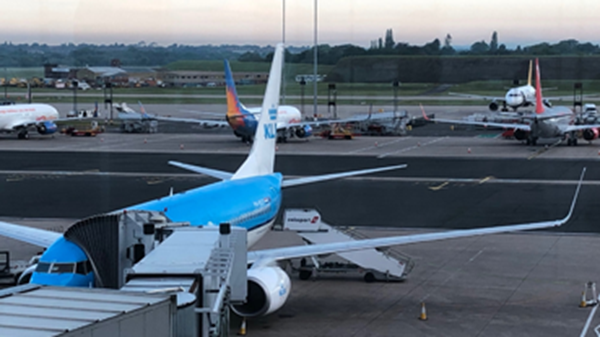Kilimanjaro Blog 2: Getting Trail Ready
People have asked me “How do you train for something like Kilimanjaro”? Truth be known, before I researched it properly, I probably started off wrongly at the turn of the year.
In this second blog post, George looks at the training prep involved.
People have asked me “How do you train for something like Kilimanjaro”? Truth be known, before I researched it properly, I probably started off wrongly at the turn of the year.
How do you increase fitness? Running sprang to mind! After about 17 days continuous running I started to get a few niggles on my knee… which got progressively more niggly and, in the end,, I had to give up and just rest it. It was only at the beginning of February when somebody asked why I was running (as it’s not as if I was training for a run or a marathon) that I actually started to take steps to train properly!
My core fitness has always been pretty high and that, coupled with the fact that I’m an active person anyway and already walk or cycle just over 2 miles to and from work each day, meant I was starting from a pretty good base level of fitness.
Something else to consider is the mental side of things. I’m sure there will be a point where I just want to give up… I’ve read that having the mental strength to push yourself will be just as key as anything physical. I’m hoping my competitive streak and always having the attitude of leaving nothing behind will push me through the mental side of Kilimanjaro.
Back to fitness.
There are loads of websites out there – but most do involve running. Considering my dodgy knees, I delved deeper and through a combination of websites and training blogs found something that I could realistically keep to and adapt accordingly.
So, my running shoes were ditched for:
- Hill walking – at least two decent/tough walks twice a month.
- Work commute – rotate cycling and walking to work, but on way home make it a ‘power’ walk/cycle and, when time allows, for at least two days a week choose a longer route home.
- Core and leg strengthening exercises – three times a week (at home).
- Swimming – once a week at the weekend (when possible).
When I list it above it doesn’t actually sound like much… but it has definitely helped! The latter three were pretty easy to achieve – however finding decent hills in the Midlands has been a bit more challenging! The below pics are from the Lake District.
I have pretty much kept to this routine since February and my training walks have included:
- Lake District – four times
- Malvern Hills – two times
- Shropshire Hills – two times
- And then lots of very small hills up and down in and around my local area !
|
|
 |
 |
One of the benefits is getting to see some of the breathtaking scenery the UK has to offer, like the stunning Jurassic Coast scenes above.
I’ve always been a quick walker and when training I generally go as quick as my body will allow as I like to push myself. So, after most sessions I’m (for want of a better word) knackered! However, the pace is something that I will have to change when we actually attempt Kili.
Why, I hear you ask? Altitude sickness! Altitude sickness is basically a chemical reaction in your body that can affect even the fittest person… and is the biggest worry for anyone trekking at high altitude. Imagine all the effort that goes into such an expedition only to ultimately fail, not because you lacked the fitness or mental strength that will be required but because simply your body couldn’t cope!
I would be gutted.
There are two words that our guides will repeatedly chant and sing every day to help us combat the dreaded altitude sickness. Pole Pole (pronounced “pole-ay pole-ay”) which means “slowly slowly” in Kiswahili, the main language of Tanzania. The slower we go, the longer our bodies have time to adapt to altitude. Another tactic to help combat the problem is trekking slightly higher (100/200 metres or so) than where we camp.
I’ve also purchased an altitude training mask. It has six settings – with the hardest setting at 6000 metres. I only wear it around the house (as I think I would be arrested if I wore it in public… ) but it really makes you think about breathing. You have to really suck in the air between exercise or even simple tasks like talking! I’ve no idea if it is making any difference but for the sake of £40 where’s the harm in trying - and hoping that the only breathtaking response is to the scenery!
With less than 30 days to go I’ve just completed my last big training session in the Lake District – which involved walking just shy of 30km over several of the biggest peaks in the country.
Hopefully I’ve done enough so that my fitness doesn’t let me down!!
George is raising funds for MIND, and you can donate here.











